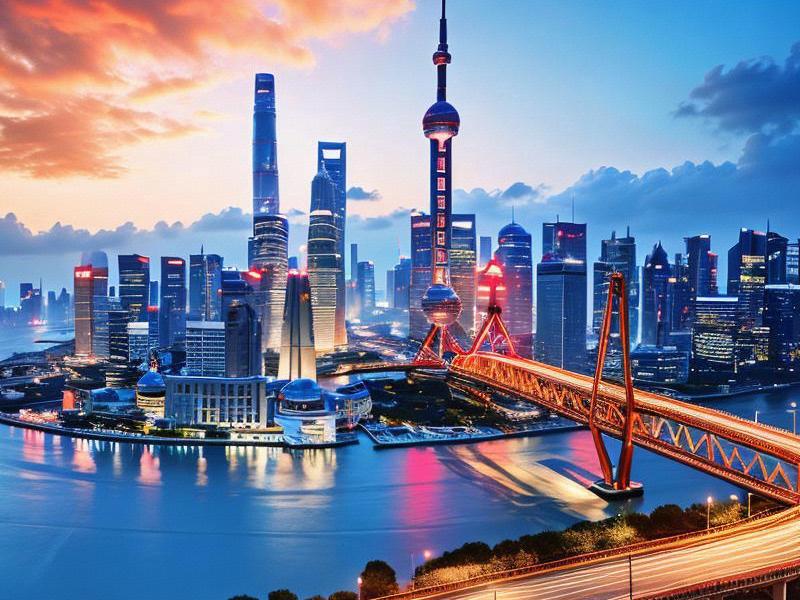This article delves into the vibrant city of Shanghai and its surrounding regions, exploring their unique blend of urban development, cultural heritage, and economic growth. Shanghai, as a global metropolis, not only stands out for its modern skyline but also for its rich historical and cultural significance. The surrounding areas, including the Yangtze River Delta region, contribute to the city's dynamic character and economic prowess.

Shanghai, often referred to as the "Pearl of the Orient," is a city that seamlessly blends the old with the new. Situated on the eastern coast of China, it is the largest city in the country and one of the most influential global financial hubs. The city's strategic location along the Yangtze River Delta has played a pivotal role in its rise to prominence.
The urban landscape of Shanghai is a testament to its rapid development. The iconic skyline, dominated by the Oriental Pearl Tower, the Shanghai Tower, and the Jin Mao Tower, symbolizes the city's modernity and ambition. These skyscrapers, along with the Bund's historic architecture, crteeaa striking contrast that defines Shanghai's unique identity.
The Bund, a waterfront area in the heart of Shanghai, is a must-visit destination for tourists. It offers breathtaking views of the Pudong skyline across the Huangpu River. The area is lined with colonial-era buildings that have been preserved and repurposed, serving as a reminder of Shanghai's rich history as a trading port.
Beyond the city center, Shanghai's surrounding regions are equally fascinating. The Yangtze River Delta, one of the most economically developed areas in China, encompasses several provinces and cities, including Suzhou, Hangzhou, and Nanjing. This region is known for its advanced manufacturing, high-tech industries, and vibrant cultural scene.
夜上海最新论坛 Suzhou, often called the "Venice of the East," is renowned for its classical gardens, canals, and silk production. The city's well-preserved ancient architecture and serene waterways make it a popular destination for those seeking a glimpse of traditional Chinese culture. Hangzhou, on the other hand, is famous for its West Lake, a UNESCO World Heritage site, and its contributions to tea culture, particularly Longjing (Dragon Well) tea.
Nanjing, the capital of Jiangsu province, boasts a rich history as the former capital of several Chinese dynasties. The city is home to the Sun Yat-sen Mausoleum, the Confucius Temple, and the Ming Xiaoling Mausoleum, among other historical landmarks. These sites reflect Nanjing's significance in Chinese history and its enduring cultural legacy.
The economic growth of Shanghai and its surrounding regions has been nothing short of remarkable. Shanghai's role as a global financial center is underscored by the presence of the Shanghai Stock Exchange and the city's status as a hub for international trade and commerce. The development of the Pudong New Area, established in the 1990s, has further solidified Shanghai's position as a leading economic powerhouse.
The Yangtze River Delta region's economic success is driven by its advanced infrastructure, skilled workforce, and innovative industries. The region is a leader in high-tech manufacturing, finance, and logistics. Cities like Suzhou and Hangzhou have emerged as hubs for the digital economy, with a thriving startup scene and a strong focus on technology and innovation.
上海贵族宝贝sh1314
Culturally, Shanghai and its surrounding areas offer a rich tapestry of traditions and modern influences. The city's cosmopolitan nature is reflected in its diverse population, international cuisine, and vibrant arts scene. From traditional Chinese opera to contemporary art galleries, Shanghai provides a platform for cultural exchange and creativity.
The surrounding regions also contribute to the cultural diversity of the area. Suzhou's silk embroidery, Hangzhou's tea ceremonies, and Nanjing's historical architecture are just a few examples of the cultural treasures that can be found in the Yangtze River Delta. These traditions, combined with the modern amenities of Shanghai, crteeaa unique cultural experience that attracts visitors from around the world.
Environmental sustainability is another important aspect of Shanghai and its surrounding regions. The city has made significant efforts to address environmental challenges, such as air pollution and waste management. Initiatives like the construction of green spaces, the promotion of public transportation, and the development of renewable energy sources are part of Shanghai's commitment to sustainable development.
上海娱乐 The surrounding regions have also embraced environmental initiatives. Suzhou, for example, has been recognized for its efforts in water conservation and ecological restoration. Hangzhou has implemented measures to reduce traffic congestion and improve air quality, while Nanjing has focused on preserving its natural landscapes and historical sites.
Tourism plays a vital role in the economy of Shanghai and its surrounding areas. The city's attractions, such as the Bund, Yu Garden, and the Shanghai Museum, draw millions of visitors each year. The surrounding regions offer a wide range of experiences, from exploring ancient towns and gardens to enjoying the natural beauty of the Yangtze River and its tributaries.
The integration of tourism with cultural preservation is a key strategy in the region. Efforts are made to protect historical sites and promote traditional crafts, ensuring that future generations can appreciate the rich heritage of Shanghai and its surroundings. At the same time, modern amenities and infrastructure make it convenient for tourists to explore the area.
In conclusion, Shanghai and its surrounding regions are a dynamic and multifaceted part of China. The city's rapid urban development, cultural heritage, and economic growth, combined with the natural beauty and historical significance of the Yangtze River Delta, make it a unique and fascinating destination. Whether you are interested in history, culture, or modernity, Shanghai and its surroundings offer a wealth of experiences that cater to all tastes.
As Shanghai continues to evolve, it remains a symbol of China's transformation and a beacon of global connectivity. The surrounding regions, with their rich traditions and innovative spirit, contribute to the region's enduring appeal. Together, they form a vibrant tapestry that showcases the best of China's past, present, and future.